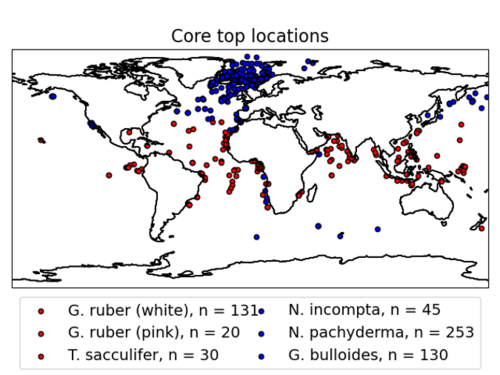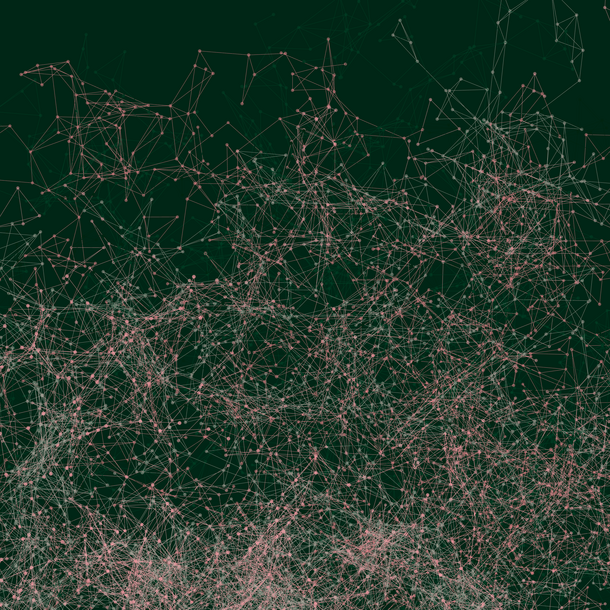Paleo Climate reconstruction using multi-fidelity machine learning
Doctoral Researcher:
Lena Happ, AWI and Jacobs University Bremen, lena.happ@awi.de
Supervisors:
- Prof. Dr. Thomas Laepple, Alfred Wegner Institute - Helmholtz Centre for Polar and Marine Research, Potsdam, Thomas.Laepple@awi.de
- Prof. Dr. Peter Zaspel, Jacobs University Bremen, Computer Science, p.zaspel@jacobs-university.de
Location: Bremen/Bremerhaven
Disciplines: paleoclimatology, statistics, applied mathematics, machine learning
Keywords: paleoclimate reconstruction, proxy data, uncertainty quantification, Bayesian inference, Gaussian processes, multi fidelity machine learning
Motivation:
To understand future climate change, it is critical to fully understand the past and present climate system. Paleoclimate proxies such as geochemical parameters measured in sediment cores are the only possibility available to us to test our understanding of the past climate system, and to validate current climate models, and to develop effective predictive tools for the future. However, it is difficult to de-convolve this knowledge as proxy records are often time-uncertain, are noisy, sparse and different proxies for the same parameter may behave differently. Examples for challenges in marine sediment records include the habitat of the recording organism that will determine the season and depth domain recorded; the effect of multiple climate or geochemical parameters on the proxy signal, as well as mixing and preservation effects near and in the sediment.
Aim:
This PhD project will use and adapt machine learning approaches toimplement statistical models on the climate to proxy relationship and to reconstruct past climate states from proxy data. This requires the compilation of suitable paleo-proxy data, the adaptation and test of multi-fidelity machine learning methods and the testing and application of the method to reconstruct a past climate state.
Overall our approach aims at maximizing the predictive quality and promises to incorporate proxy data even if it is time-uncertain, sparse and different proxies for the same parameter may behave differently or have various levels of noise. This will further provide an improved understanding of the transfer function between climate and proxy data that might also lead to better calibration approaches.
Objectives:
(1) develop forward models for different proxy signals using machine learning techniques
(2) solving the inverse problem to reconstruct yearly mean sea surface temperature from multi-proxy datasets
(3) test the new method simulating digital cores from climate models using existing proxy system models
(4) apply the new method to derive an improved global climate field reconstruction of glacial cooling, an important piece of information for constraining the climate sensitivity in climate models
References
- Bonilla, E.V., Chai, K.M.A. and Williams, C. K. I., 2008, Multi-task Gaussian Process Prediction, Advances in Neural Information Processing Systems 20, 153-160
- Hegland, M., Garcke, J., Challis, V., 2007, The combination technique and some generalisations, Linear Algebra and its Applications 420(2–3) , 249-275
- Jonkers, L. & Kučera, M., 2017, Quantifying the effect of seasonal and vertical habitat tracking on planktonic foraminifera proxies, Clim. Past 13, 573–586
- Malevich, S. B., Vetter, L., & Tierney, J. E., 2019, Global core top calibration of ? 18 O in planktic foraminifera to sea surface temperature. Paleoceanography and Paleoclimatology, 34, 1292–1315
- Roche, D.M., Waelbroeck, C., Metcalfe, B. & Caley, T., 2018, FAME (v1.0): a simple module to simulate the effect of planktonic foraminifer species-specific habitat on their oxygen isotopic content, Geosci. Model Dev. 11, 3587–3603
- Waelbroeck, C., Mulitza, S., Spero, H., Dokken, T., Kiefer, T., and Cortijo, E., 2005, A global compilation of late Holocene planktonic foraminiferal δ 18 O: relationship between surface water temperature and δ 18 O, Quaternary Sci. Rev. 24, 853–868
- Zaspel, P., Huang, B., Harbrecht, H., von Lilienfeld, O.A., 2019, Boosting Quantum Machine Learning Models with a Multilevel Combination Technique: Pople Diagrams Revisited, J Chem Theory Comput. 15(3), 1546-1559









